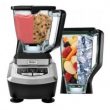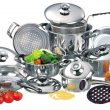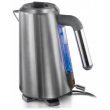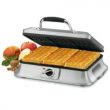Counting calories but having trouble keeping up? Do you have trouble just keeping yourself under control when preparing meals? For a small price, there’s now a remedy for this problem. Diet food delivery plans eliminate the temptation to overeat, while helping you learn about proper portion size and nutrition. If this intrigues you, read on!
Plans
You’ve probably seen them on TV. Diet delivery plans will literally have calorie-counted and carefully constructed meals delivered to your door each day. For a price, companies will cook, prepare, and have meals sent straight to your door each day. These companies have been springing up all over the country, ensuring that you could have access to these programs wherever you find yourself. The process of getting set up is simple, just find a company in your area, select your plan, and the meals will be mailed to your door each week. While every system varies, most meals will be sent frozen, and must be microwaved or baked for consumption. Most companies will give you a wide berth of options, allowing you to select foods that fit your palate and dietary restrictions.
Basics
 The most basic rule of losing weight is to burn more calories than you take in. This is where diet delivery meals come in. The meals are carefully constructed so that as long as your follow the program, you will always be taking in less calories than you consume. This often must be aided with daily exercise in order to maximize the effort. Many of these plans can be calibrated to suit your caloric needs as well. For example, if you are aiming to maintain your current weight, your plan can be adjusted accordingly to put you in a calorie-neutral situation.
The most basic rule of losing weight is to burn more calories than you take in. This is where diet delivery meals come in. The meals are carefully constructed so that as long as your follow the program, you will always be taking in less calories than you consume. This often must be aided with daily exercise in order to maximize the effort. Many of these plans can be calibrated to suit your caloric needs as well. For example, if you are aiming to maintain your current weight, your plan can be adjusted accordingly to put you in a calorie-neutral situation.
There are a few situations when these diet delivery systems may not be the best way to go. For people cooking with kids, having to prepare a separate meal for you and your family may be a logistical hassle and an easy way to fall off the boat. On top of that, these plans can run anywhere from $12 a day to $50 a day! If you’re on a budget, it may be more practical just to take notes from existing meal plans and create meals yourself.
As stated above, the most basic way of losing weight is to burn more calories than you take in. Generally, this means eating less and moving more. However, you don’t want to overdo it. While cutting calories is good and beneficial, take care to not cut too many. In order for the human body to function well, there is a certain amount of nutrients it must consume in order to function. If you cut too many calories, it becomes possible that you’re also cutting out your body from getting the vital nutrients it needs to function. Generally speaking, you don’t want to drop more than a couple pounds a week. While it is possible to lose more, it all depends on factors such as how much weight do you have to lose. Cutting fat is good, but if you are not careful the body can start burning muscle, which is not good to lose.
Make the Most
In addition to your diet plans, there are a few tips you can remember to maximize your weight loss. First of all, try to eat often, but don’t overdo it. Eat a multitude of snacks, but make sure they are all sized appropriately. Also, if you’re snacking every three hours, you will have to size down your meals to account for the extra calories. Try to balance the food groups you are consuming as well. Make sure you are taking in everything on the food pyramid, including fruits, veggies, grains, and protein. Dividing up your nutrient intake based on meals and snacks is a good idea. For example, eat some fresh fruit for a snack, and then eat a fresh veggie for your next snack. Finally, the single biggest thing you can do is watch your portion sizes. Appearances can be misleading. For example, some foods require only a small amount for a large caloric load, while others are lighter in calories comparatively. A small candy bar will have as many calories as a whole bunch of bananas. Analyze how many calories each of your foods has to determine how big your portions should be.










